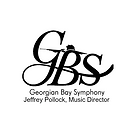December Program Notes
- GBS
- Dec 7, 2017
- 2 min read
Mozart’s Clarinet Concerto in A Major written in 1791 is one of his last completed works. Written for his good friend, clarinetist Anton Stadler, it premiered just two months before Mozart’s death at age 36. Mozart’s collaborative relationship with clarinetist Anton Stadler advanced the reputation of the instrument. The Concerto is still regarded by many as the best of its class. Mozart loved the instrument and was one of the first composers to include it in the standard orchestral configuration of his symphonic works. He also established for future generations of composers the clarinet's character as a solo instrument.
The first movement begins with flowing melodies that exploit the clarinet's rich tone in an atmosphere of gracious lyricism.
The Adagio second movement is undoubtedly one of Mozart's most sublime slow movements, as the clarinet spins a tale of deep loneliness and loss. This movement displays the exquisite singing quality of the clarinet.
The finale movement is a mercurial rondo that captures the chirpy, comical quality of the clarinet. The opening rondo theme is presented by the clarinet, establishing an atmosphere of levity.
Johann Strauss II (1825-1899) "the Son" remains the most admired today of a dynasty of composers that began with Johann Strauss I (1804-1849); he also outshines his composer brothers Josef and Eduard. Die Fledermaus is his single most-famous work next to The Blue Danube Waltz.
The hugely prolific Johann Strauss II was not even meant to be a composer: Papa Strauss tried to convince him to undertake a more secure career. Yet by the time of Die Fledermaus ("The Bat") in 1874, Johann junior was internationally acclaimed. (In 1872 he undertook a concert tour of the United States.) The work has long been regarded as a classic exemplar of the Viennese operetta. It is the story about farcically confused identities at a Viennese masked ball. It premiered in April of 1874, but, like Handel's Messiah, Die Fledermaus has become irrevocably associated with a particular time of year: New Year's Eve. And the operetta's moral? Blame it all on the champagne.
The Overture is similar to the "potpourri"-type of overture that would later become popular on Broadway: essentially a parade of tunes to come within the stage work it introduces, with the perky, chromatic three-note motif heard at the very top serving as binding material.





















Comments